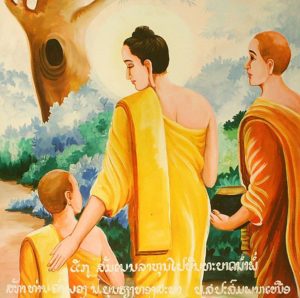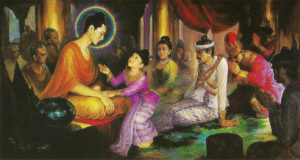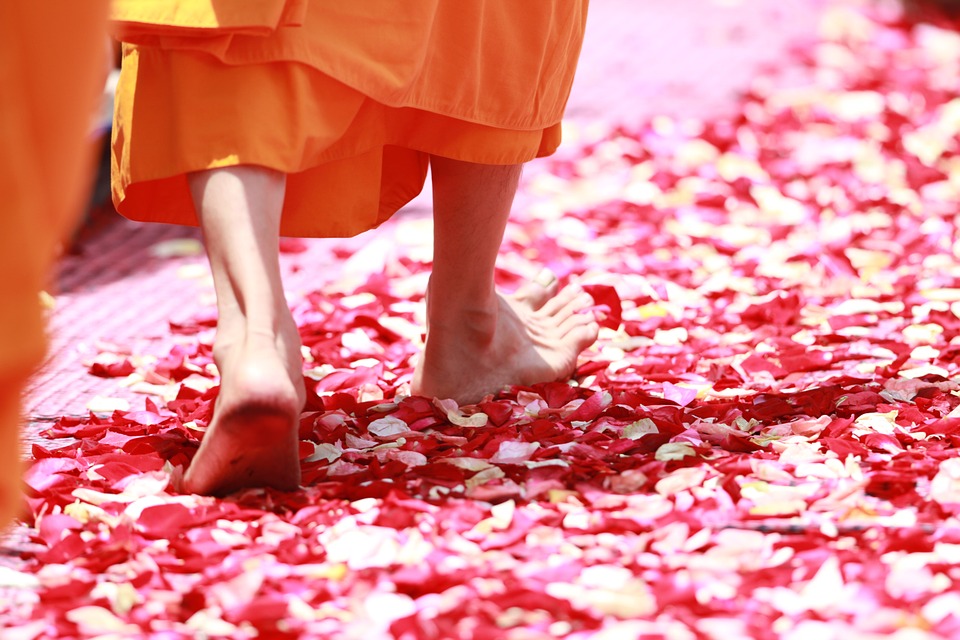Gautama Buddha was born approximately 563 BC-483 BC. The name he was born with was Siddhartha Gautama ( Sanskrit form, or Siddhatta Gotama, Parkrit form). The name “Buddha” ( meaning “Enlightened One” ) came from his followers. He is also commonly known as Shakyamuni/or Sakyamuni, “The sage of the Shakya/Sakya clan” and as Tathayata ( untranslatable. Roughly means “The thus come one” or “The thus gone one”. Accentuating the nature of a Buddha to go out in the world and experience things without adding or subtracting anything.
 Accounts of his life were only by oral tradition up until a few hundred years after his death, then it was first written. Buddhist scriptures do not mention accounts of metaphysics nor magic in the years Buddha was alive.
Accounts of his life were only by oral tradition up until a few hundred years after his death, then it was first written. Buddhist scriptures do not mention accounts of metaphysics nor magic in the years Buddha was alive.
Siddharta ( otherwise known as Buddha) married and had a son, Rahula. At the age of 29, around 534 BC, he became progressively dissatisfied with the opposition between a life of aristocratic luxury and the suffering he witnessed endemic in all people. Siddharta abandoned his inheritance and palace and began living an ascetic life, training with ascetic philosophers, and practicing austere meditative practices.
Six years after ( around 528 BC ) he hound that the harsh practices did not lead to greater understanding, he abandoned them and focused on meditation and the “Middle Way” ( a practice of non-extremism), soon afterward he claimed he had realized complete awakening or enlightenment into the nature and cause of human suffering and the steps necessary to eliminate it. This is called “Bodhi”.
Forty-five years before his death he traveled the Gangetic Plain of central India. Teaching his meditation practices to a diverse range of people. He founded the community of Buddhist Monks and Nuns, the Sangha, to continue the teachings after his death (considered to be the paranirvana or complete ending of Buddha).
Death of Buddha
Buddha died at Kusinara (now Kusinagar, India) at the age of 80. One account says that Buddha’s last words were: ” All things are made of parts eventually come apart. Be mindful, and achieve enlightenment!”, while another account says, ” Subject to change are all things. Strive on with diligence”.
The beginning of Buddhism
This is all the beginning of Buddhism, which began in approximately 486 BC/483 BC and is still in practice as we speak.
 Today there are 300+ million followers in which at least 200 million are found in India. It has been a tradition for almost 2500 years. Many people look at Buddhism as one of the major religions. Buddhism in its purest form is more of a philosophy.
Today there are 300+ million followers in which at least 200 million are found in India. It has been a tradition for almost 2500 years. Many people look at Buddhism as one of the major religions. Buddhism in its purest form is more of a philosophy.
Mind, body, and spirit
As I understand Buddhism, it is about the mind, body, and spirit. It teaches about peace, love, and harmony. If you were to meet a Buddhist Monk or Nun they would probably be the nicest and calm person you have met. They meditate all the time which reduces stress a considerable amount, they are more alert, understanding and are happy most of the time.
If you have not tried meditating maybe you should try it, there are a lot of studies out there that will tell you that meditating is good for you. As I have said before it reduces stress a considerable amount and allows you to think more clearly. So I will have to say that the religion/philosophy of Buddhism came up with a great way of helping people become and or stay more healthy.





